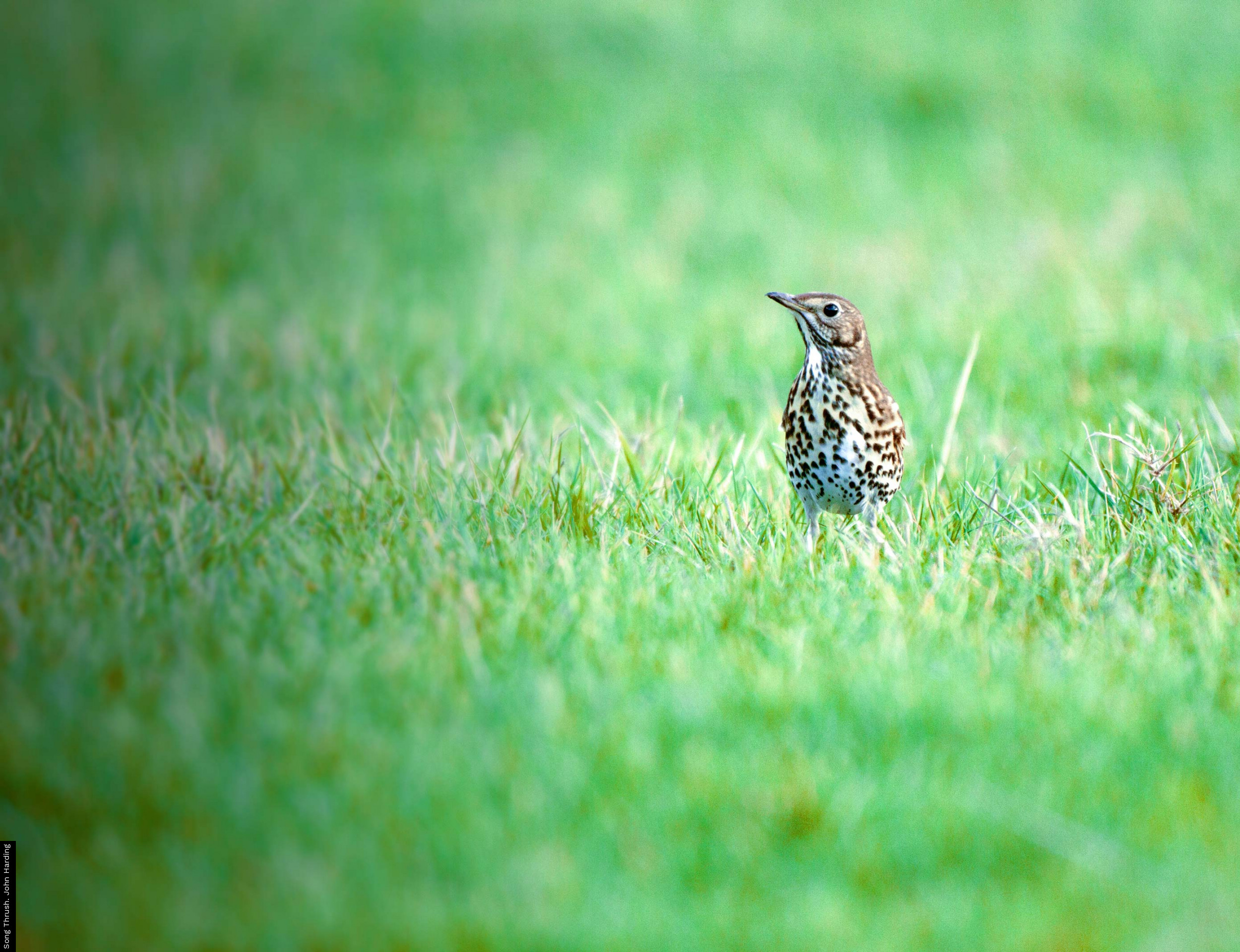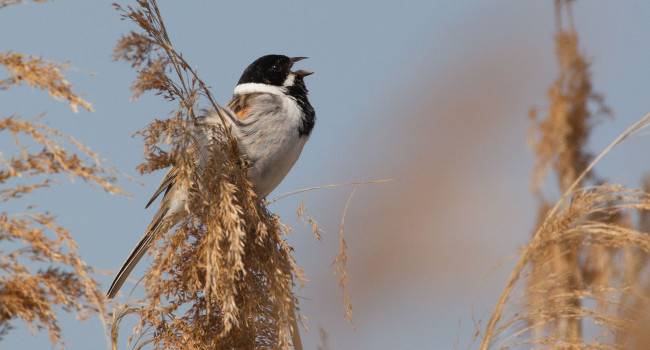Blackbird
Blackbird
Turdus merula

Blackbirds are so familiar that they should present no difficulties in identification. Adult males are black in colour and in full breeding plumage, show yellow eye-rings and bright bills. Adult males with duller bills and lacking yellow eye-rings at the start of the breeding season will be winter visitors, probably about to depart back to their own breeding grounds (where they will then develop the full breeding plumage). Females are umber or rufous brown in colour, often with a pale throat patch. Juveniles are a warm rufous brown, with spotted plumage.
Much of what we know about Blackbirds comes from studies carried out in suburban parks and gardens. Blackbirds seem particularly at home in these habitats, perhaps helped by the ability to nest in a range of different situations. They can often be seen feeding on lawns and flower beds. Blackbirds are territorial in nature and defend areas holding suitable nest sites and feeding opportunities.
During the autumn, hordes of Blackbirds from Norway, Sweden and as far east as Finland, come to spend the winter with us. We know this from the work of bird ringers. By fitting birds with rings, it is possible to identify where they have come from. During the winter, these winter will forage alongside our resident birds, making use of the windfall apples and other food put out to help them through the cold winter months.
Find out more about Blackbirds on BirdFacts and the Wider Countryside Report.






Share this page